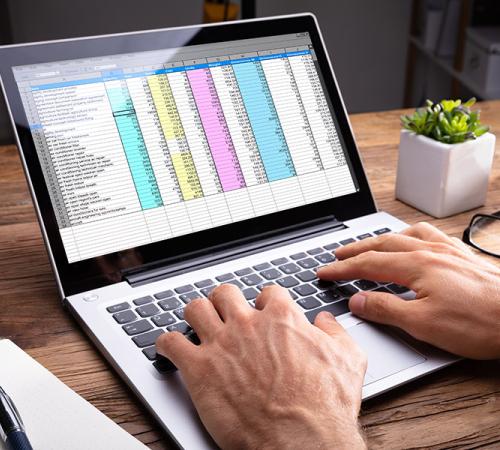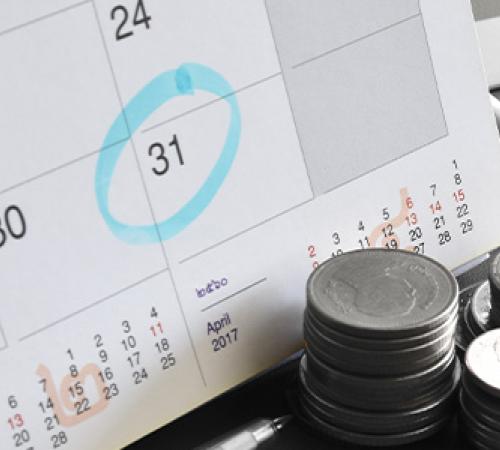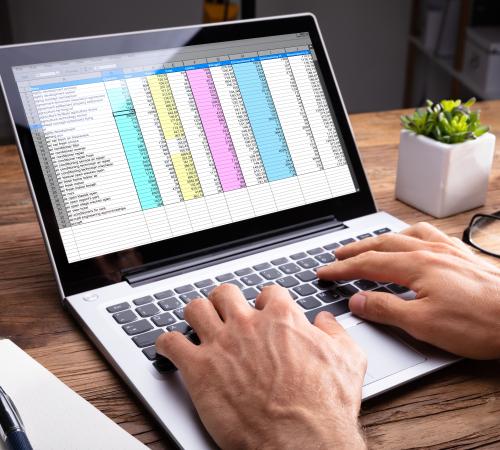

What is Making Tax Digital for business?
What Making Tax Digital aims to do (external link) is digitise the tax system in the UK for businesses and individuals.
MTD forms an integral part of plans laid out by the government for HMRC to become ‘one of the most digitally advanced tax administrations in the world’.
A key part of this ambition is to change how the system operates to ensure it’s ‘easier for taxpayers to get their tax right’ by making administration more efficient and effective.
The government reports that, between 2018 and 2019, avoidable mistakes cost the Exchequer £8.5 billion, highlighting the importance of getting tax right the first time (external link).
With Making Tax Digital, businesses need to keep digital tax records and use compatible accounting software to manage VAT returns with HMRC.
Eventually, the government hopes to make all tax returns paperless. Tax legislation will then evolve to mean paper records won’t meet set standards in the majority of circumstances.
How to register for MTD
Businesses with a taxable turnover above the VAT threshold of £85,000 are now required to register for MTD (external link) – here’s how.
You must have software that’s compatible with Making Tax Digital (see below).
To sign up for MTD (external link), you need your:
- Business email address
- Government Gateway login details
- VAT registration number, plus your latest return
In addition:
- Sole traders need a National Insurance number
- Limited companies and registered societies need company registration number and Unique Taxpayer Reference (UTR)
- General partnerships need a UTR and their registered Self Assessment postcode
- Limited partnerships need company registration number, UTR and their registered Self Assessment postcode
If you currently pay by Direct Debit, avoid paying twice by signing up no less than:
- Seven days before the due date for your first MTD return
- Five days after the due date for your final non-MDT return
Businesses that currently earn less than £85,000 can also register voluntarily.
Is Making Tax Digital compulsory?
Eventually, the Making Tax Digital process will be a compulsory part of tax legislation. As it stands, it’s a requirement for businesses with a taxable turnover of more than £85,000.
However, from 1 April 2022, the government has stated that all VAT-registered businesses must be signed up to MTD, regardless of turnover.
MTD deadlines
The Making Tax Digital deadlines and the business types they apply to are:
- 1 April 2019 – VAT-registered businesses with over £85,000 worth of taxable turnover (the VAT threshold). Businesses considered ‘more complex’ were allowed six months’ extra time
- 1 October 2019 – Registered businesses such as not-for-profit organisations, local authorities and trusts were given a six-month referral to this date
- 1 April 2022 – Registered businesses with a turnover under the VAT threshold of £85,000
- 6 April 2024 – Those who file Income Tax Self Assessments of over £10,000 a year for either their business or income from property
Making Tax Digital for VAT
Once you have an understanding of what Making Tax Digital is, it’s important to understand what you need to do in practice as a business to fulfil your obligations.
If you’re in the bracket of businesses and individuals required to register, you must follow the rules for MTD VAT.
The following are the records you must keep digitally (external link) to be compliant:
- Your contact details, including business name
- VAT details, including registration number and schemes used
- The VAT on both supplied and received services and goods
- Adjustments made on returns
- Time of supply (external link) and value of supply (excl. VAT) for everything bought and sold
- VAT rate charged on supplied goods and services
- Details for reverse charge transactions – the VAT on both sale and purchase price of the services and goods you purchase
- Total daily gross takings (if and when your business uses a retail scheme)
- Purchase details of items that are VAT reclaimable (if your business uses the Flat Rate Scheme)
- Total sales, plus VAT (if you use the Gold Accounting Scheme)
- Documentation that covers multiple transactions made on your business’ behalf by employees for expenses, third party businesses or volunteers for charity fundraising
To record these details and documents properly and also to submit them appropriately, you need to use software that’s compatible with HMRC systems. You might use multiple methods to keep records – if this is the case, they need to be linked and converted to the correct format before submitting your tax returns.
Making Tax Digital will officially launch for sole traders and self-employed professionals who make above £10,000 a year on 6 April 2024. This date was initially in place for April 2023. HMRC have pushed it back a year to allow people more time to prepare as they recover from the impact Covid-19 has had on their businesses.
However, providing you fill in a Self Assessment tax return, HMRC are allowing sole traders to sign up early (external link) on a voluntary basis or pilot scheme. This will allow self-employed people to get used to the system in advance of it being compulsory.
As with businesses already set up on MTD, self-employed users will need compatible software to maintain their tax records. You’ll then be required to send a summary of income and expenses each quarter and a final report at the end of the financial year – you can then claim any tax relief or allowances you’re eligible for.
The government has stated that a positive of the MTD system is that it removes the need to guess how much to save for your tax bill. Making Tax Digital will allow self-employed individuals to keep an ongoing eye on an estimate of the Income Tax they owe.
Making Tax Digital for Landlords
Landlords making over £10,000 in annual rental income will be required to sign up to Making Tax Digital by 6 April 2024.
However, if you’re a landlord and you’re ready and able to register now, you can voluntarily sign up to MTD. You might check if you’re eligible (external link) and get set up with the system early to join a pilot scheme.
As it currently stands, there’s no set deadline for MTD for Corporation Tax – HMRC has said it will assess the rollout of the system for VAT.
The government has suggested that it will not mandate MTD for Corporation Tax before 2026 and will give businesses the opportunity to experience a pilot.
Making Tax Digital software
Prior to signing up for MTD, your business will need to have a package of software compatible with the HMRC system that allows you to maintain digital records and send your VAT Returns. Alternatively, if you use spreadsheets, you’ll need something they refer to as ‘bridging software’ to be able to connect your records and submissions.
MTD compatible software includes, but is not limited to:
- Sage (200cloud, 50cloud, Business Cloud Accounting, Intact and X3)
- QuickBooks (Intuit, Bridging Software)
- Xero
- ABACUS
- AccountsIQ
- Zoho
- Workday
- Tax Systems Limited (AlphaBridge, AlphaVAT)
You can find a full list of compatible software (external link) for Making Tax Digital on the GOV.UK website. Search for software to discover who it’s suitable for and its VAT-specific features to help you make informed decisions on the tool that’s most suitable for your circumstances.
If your business doesn’t currently operate on software that’s compatible, there will be some additional cost to getting set up appropriately. Most of the software compatible with HMRC will cost your business money to buy, although there are some free options.
HMRC estimates MTD will cost (external link) business on average a transitional cost of £330 and an annual sum of £35.
This estimate includes the cost of:
- Additional agent support
- Software set-up
- Hardware costs
- Training
- Ongoing software fees.
What does MTD mean for you?
MTD for the self-employed
Self-employed professionals earning more than £10,000 are required to sign up for the MTD system by 6 April 2024. Although it’s not compulsory until this time, there are opportunities to voluntarily sign up early for pilots.
MTD for landlords
In a similar way to sole traders and the self-employed, landlords earning rental income of over £10,000 annually will need to sign up to MTD by 6 April 2024. Landlords can also volunteer to register early.
MTD for accountants
What Making Tax Digital means for accountants is a little different to what it means for businesses filing returns themselves.
HMRC lays out seven steps for accountants or agents to follow (external link) – these are:
- Verify if and when to sign up to MTD for VAT for your client
- Ensure compatible software is in place
- Make an agent services account
- Sign existing VAT clients up for MTD
- Request that new clients sign up to MTD
- Request that new clients authorise you
- Ensure your software is authorised
Disclaimer:
At Hiscox, we want to help your small business thrive. Our blog has many articles you may find relevant and useful as your business grows. But these articles aren’t professional advice. So, to find out more on a subject we cover here, please seek professional assistance.






